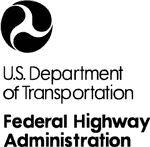U.S. Department of Transportation
Federal Highway Administration
1200 New Jersey Avenue, SE
Washington, DC 20590
202-366-4000
Federal Highway Administration Research and Technology
Coordinating, Developing, and Delivering Highway Transportation Innovations
| FACT SHEET |
| This fact sheet is an archived publication and may contain dated technical, contact, and link information |
|
| Publication Number: FHWA-HRT-09-042 Date: May 2009 |
Publication Number: FHWA-HRT-09-042 Date: May 2009 |
PDF files can be viewed with the Acrobat® Reader®
Metropolitan planning agencies face increasingly complex issues in modeling interactions between the built environment and multimodal transportation systems. Although great strides have been made in simulating land use, travel demand, and traffic flow, gaining the ability to model urban systems across these phenomena would be a revolutionary advance. This challenge is the focus of "Modeling the Urban Continuum in an Integrated Framework: Location Choice, Activity Travel Behavior, and Dynamic Traffic Patterns," an Exploratory Advanced Research (EAR) Program project launched by the Federal Highway Administration (FHWA) in 2008. |
The goal of this EAR project is not to devise new modeling software but to develop a conceptual framework, an integrated prototype, and computational tools with which others can tailor their own integrated systems, using available micro-simulation models. These models cover a broad array of decisions and behaviors on the part of individuals, businesses, and governments, from long-term location choices to daily travel route choices.
Land-use modeling enables planners to simulate the interrelationships of land-use dynamics, transportation, and air quality, including feedback effects such as potential induced demand. UrbanSim, for example, is helping planners address policy issues related to reducing urban sprawl, altering travel behavior, and providing affordable housing.
New tour- and activity-based models of travel demand simulate the choices of travel times, modes, and routes and the impact they have on travel patterns. Travel demand models based on these concepts are in use or under development by several metropolitan planning organizations around the country.
Advanced transportation network modeling methods, such as dynamic traffic assignment, are used by a broad set of practitioners to inform project evaluation and operational planning, city roadway reconfigurations, design and evaluation of intelligent transportation systems, and estimating both typical and evacuation traffic.
Any effort to integrate these three distinct arenas of microsimulation must draw on leaders in each area. "An innovative feature of this project," says Brian Gardner, FHWA, "is the partnership among three research universities working together to integrate land use, travel demand, and transport network simulations, each providing leadership in its area of expertise." Researchers at the Arizona State University, Tempe, are leading the activity–travel behavior modeling aspect of the study; a team from the University of Arizona, Tucson, is providing expertise in dynamic traffic assignment modeling; and scientists at the University of Washington, Seattle, are the project's specialists in land-use microsimulation modeling and computational algorithms. Assisting the universities in the 3-year effort are the Arizona Department of Transportation, Maricopa Association of Governments and Maricopa County Department of Transportation in Phoenix, Pima Association of Governments in Tucson, and Puget Sound Regional Council in Seattle.
The microsimulation systems represent great differences in geographic and temporal scale, data structures, behavioral units and agents, and other characteristics. To reconcile these differences, the project team faces daunting tasks.
In addition, because each of the microsimulation methods alone requires intensive use of computation resources, an important task of the research team is developing data structures and data handling systems for large complex databases so as to optimize computational performance, prevent data overload, and achieve reasonable run times.
Initial information sharing among the research groups has been completed, the model architecture has been drafted, and a select external technical panel has been chartered to discuss the project direction. Panel review of the initial architecture is underway.
Upon completion, the prototype system will undergo real-world demonstration, modeling various network supply and socioeconomic, land use, and transport policy scenarios for an urban area with at least 1 million inhabitants and 1,000 traffic analysis zones. Procedures for calibrating and validating the system to local areas will be developed.
The researchers are committed to sharing knowledge through open-source applications, and the entire set of research products—source code, graphical user interfaces, programs and scripts, architecture documentation, and user guides—will be available at the project Web site for others to use and enhance. Project completion is anticipated in 2011.
The innovations achieved in this EAR effort are expected to have a major impact on transportation planning for sustainable futures.
"In addition to a state-of-the-art integrated prototype," says Gardner, "this effort will provide valuable lessons for next-generation transport modeling as well as direction for transport simulation frameworks."
For more information on this EAR Program project, contact Brian Gardner, FHWA Office of Planning, at 202-366-4061 (email: brian.gardner@dot.gov).
What Is the Exploratory Advanced Research Program?FHWA's Exploratory Advanced Research (EAR) Program focuses on long-term, high-risk research with a high payoff potential. The program addresses underlying gaps faced by applied highway research programs, anticipates emerging issues with national implications, and reflects broad transportation industry goals and objectives. To learn more about the EAR Program, visit the Exploratory Advanced Research Web site at www.fhwa.dot.gov/advancedresearch. The site features information on research solicitations, updates on ongoing research, links to published materials, summaries of past EAR Program events, and details on upcoming events. For additional information, contact David Kuehn at FHWA, 202-493-3414 (email: david.kuehn@fhwa.dot.gov), or Terry Halkyard at FHWA, 202-493-3467 (email: terry.halkyard@fhwa.dot.gov). |

